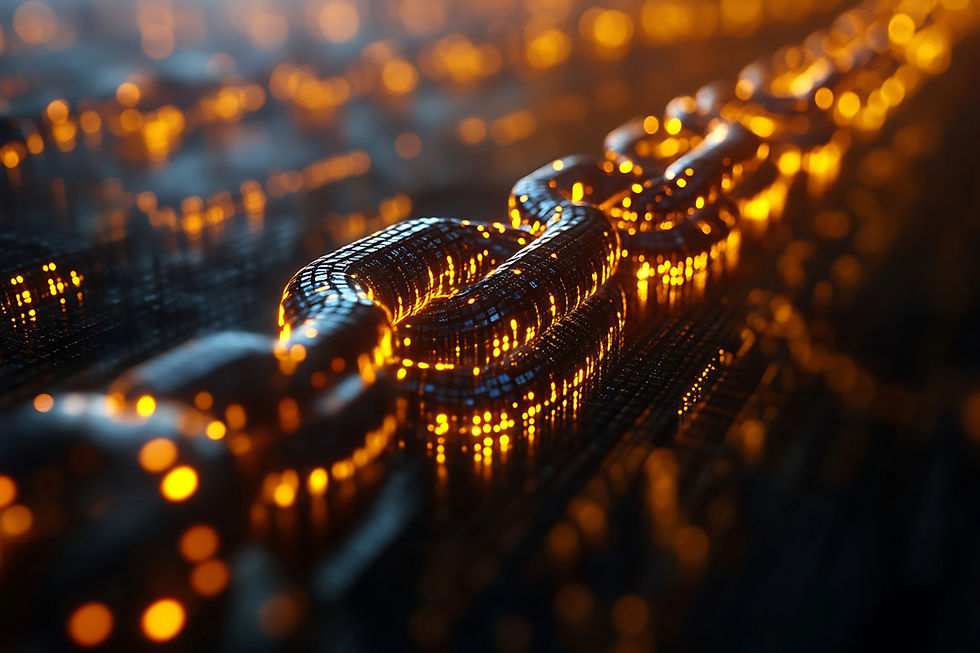Applications of Plasma Activated Water (PAW)
- Davide

- Jun 16, 2024
- 6 min read
Updated: Jul 18, 2024

Plasma Activated Water is an innovative technological breakthrough that stands at the forefront of diverse biochemical applications, spanning agriculture, food safety, and the biomedical industry.
As a product of the interaction between atmospheric plasma and water, PAW incorporates a variety of reactive oxygen and nitrogen species, fundamentally altering the water's chemical makeup.
This introductory exploration delves into the intricacies of how atmospheric plasma generates these reactive species and the resultant physicochemical modifications of the water.
Introduction to Plasma Activated Water (PAW)
Plasma Activated Water (PAW) represents a significant advancement in the field of biochemical applications, emerging as a versatile solution across agriculture, food safety, and biomedical sectors. PAW is produced through the interaction of atmospheric plasma with water. Atmospheric plasma, which consists of a partially ionized gas containing ions, electrons, and neutral particles, imparts various reactive species into water, including hydroxyl radicals, nitrate, hydrogen peroxide, and others.
The interaction between atmospheric plasma and water is a complex process influenced by several factors such as the type of gas used to generate the plasma, the energy input, and the water's initial properties. The generation of plasma can be achieved using methods such as dielectric barrier discharge (DBD), plasma jets, or corona discharge, each method offering different efficiencies and effects on the water's chemical composition.
The result is a chemically altered water with enhanced oxidative properties, making PAW an effective antimicrobial agent and a promoter of various biochemical reactions. Due to these properties, PAW finds extensive applications in several domains, particularly in promoting agricultural productivity, enhancing food preservation, and contributing to sanitization protocols in medical environments.
The Science Behind PAW
Plasma Activated Water (PAW) is distinguished by its unique chemical profile, primarily driven by the generation of reactive oxygen and nitrogen species (RONS) when atmospheric plasma interacts with water. Understanding the chemistry behind PAW involves exploring how these reactive species are formed and the subsequent changes they induce in water's physicochemical properties.
Atmospheric plasma, when brought into contact with water, acts as a rich source of energy that catalyzes the formation of RONS. These species include reactive oxygen species (ROS) such as hydroxyl radicals, hydrogen peroxide, and superoxide, along with reactive nitrogen species (RNS) like nitric oxide, and nitrogen dioxide. The production of these molecules is influenced by factors such as the type of plasma, the electric field strength, the plasma source's distance from the water surface, and the ambient air composition.
These interactions result in significant alterations in the water's physicochemical properties:
pH: The presence of RONS can cause the water’s pH to decrease due to the formation of nitric acid from dissolved nitrogen oxides.
Conductivity: The introduction of charged species such as nitrate increases the electrical conductivity of the water.
Nitrate levels: Elevated nitrate levels, resulting from the dissolution of nitrogen oxides, are particularly beneficial in agricultural contexts as they can enhance nutrient availability to plants.
Benefits and Applications of PAW
Plasma Activated Water (PAW) offers a multitude of benefits and applications that capitalize on its unique biochemical properties. As an environmentally friendly alternative to traditional agricultural and sanitation methods, PAW presents several key advantages in agriculture, food safety, and horticulture.
Enhancing Food Safety
PAW's antimicrobial properties are particularly advantageous in the realm of food decontamination. The oxidative stress induced by reactive oxygen species such as hydrogen peroxide is effective in reducing populations of pathogens and spoilage organisms on fresh produce and other food items. This extends the shelf life of these products while maintaining their safety and quality. Unlike chemical-based disinfectants, PAW does not leave toxic residues, making it a safer choice for treating consumables.
Seed Germination and Plant Growth
The application of PAW also extends to seed treatment and germination processes. Studies have shown that seeds treated with PAW exhibit faster germination rates and improved health of emerging seedlings. This is likely due to the enhanced water uptake facilitated by the modified physicochemical properties of PAW, as well as the protective effect of PAW against surface pathogens on the seeds.
Promoting Plant Growth
In addition to its role in germination, PAW has been found to promote overall plant growth and vitality. The presence of bioactive compounds such as nitrate and hydrogen peroxide can stimulate metabolic processes in plants, leading to accelerated growth and increased resilience against diseases and environmental stresses. This stimulation not only enhances agricultural productivity but also supports sustainable farming practices by reducing the need for chemical growth enhancers and pesticides.
Plasma
Experimental studies utilizing this system have provided concrete insights into how plasma treatment alters water properties and benefits plant health and growth. This section summarizes key findings from these experiments, particularly focusing on changes in pH, conductivity, and nitrate levels in water after plasma treatment, and the observed effects on the health and growth of cut roses as a case study.
Experiments using the 'Cirrus' system have demonstrated significant alterations in the physicochemical properties of water post-plasma treatment:
pH: Plasma treatment typically results in a decrease in the pH of the water. This acidic shift is attributed to the formation of various acids such as nitric acid when reactive nitrogen species dissolve in water.
Conductivity: There is a notable increase in water conductivity following plasma treatment. This increase is due to the higher concentrations of ions, particularly nitrate and nitrite, which are products of nitrogen oxides dissolving in water.
Nitrate Levels: Plasma treatment significantly boosts the nitrate content in water. This increase is crucial for agricultural applications, as nitrates are essential nutrients that support plant growth and productivity.
A focused case study on the effects of PAW on cut roses provides compelling evidence of its benefits. Treated with PAW showed an extended vase life compared to those in untreated water. This extension in longevity is likely due to the antimicrobial properties of PAW, which reduce microbial growth in the water, thereby decreasing the rate of decay. In addition to maintaining health, there was a noticeable effect on the growth rate of the rose stems and leaves, with treated roses exhibiting more robust and vigorous growth.
These experimental insights not only validate the efficacy of PAW produced by the 'Cirrus' atmospheric plasma system but also illustrate its potential as a transformative solution in horticulture and agriculture.
Creation
To generate PAW, you need a source of atmospheric plasma. Common systems used include:
Dielectric Barrier Discharge (DBD): This involves placing two electrodes with a dielectric material (non-conductive) barrier between them. When a high voltage is applied, plasma is generated in the gaps where the gas (often air or a specific gas like argon) flows.
Plasma Jet: This system directs a stream of plasma generated from a gas at high voltage directly into or over the water.
Corona Discharge: In this method, a high-voltage electrode creates a corona (an electrical discharge) that interacts with the surrounding air to form plasma.
Generating Plasma
Select the Plasma Source: Choose a plasma generation method based on the desired application and available equipment. DBD is widely used due to its ease and efficacy in generating uniform plasma.
Setup the System: Arrange the plasma source so that it can effectively interact with the water. This setup may involve positioning the electrodes above or around the water container or directing a plasma jet into the water.
Adjust the Parameters: Set the voltage, gas flow rate, and treatment duration based on the specific requirements for the type of PAW needed. These parameters affect the concentration and types of reactive species generated.
Treating the Water
Initiate Plasma Generation: Turn on the system to begin generating plasma. As the plasma interacts with the air (or another gas) and the water, it transfers energy and reactive species to the water.
Continuous Monitoring: Monitor the changes in water properties, such as pH, conductivity, and temperature, to ensure the treatment is proceeding as expected.
Duration of Treatment: The treatment time can vary, typically ranging from a few minutes to an hour, depending on the desired concentration of reactive species and the volume of water being treated.
Post-Treatment Handling
Cooling and Settling: Allow the treated water to cool and settle if needed. Some treatments might produce heat or gas bubbles.
Storage: Store PAW properly to maintain its reactive properties. PAW can degrade over time, so it is often best used shortly after production.
Safety and Precautions
Handling Plasma Equipment: Ensure safety precautions are in place, as plasma generation involves high voltages and potentially harmful UV radiation.
Quality Control: Regularly check the quality and consistency of PAW to ensure it meets the required specifications for its intended use.
Final Thoughts
At SCI Automation, we take pride in our team of experienced professionals, each bringing a wealth of expertise to our endeavors. As industry pioneers, our aim is to set new standards through innovative practices, crafting solutions that not only meet but also redefine industry benchmarks.
Our dedication lies in providing bespoke solutions meticulously tailored to match your distinct requirements and address your challenges effectively. At SCI Automation, we view ourselves not merely as service providers but as your trusted partners in progress. Should you have inquiries or require assistance with plasma technologies, we invite you to connect with our expert team for personalized guidance and support.





Commentaires